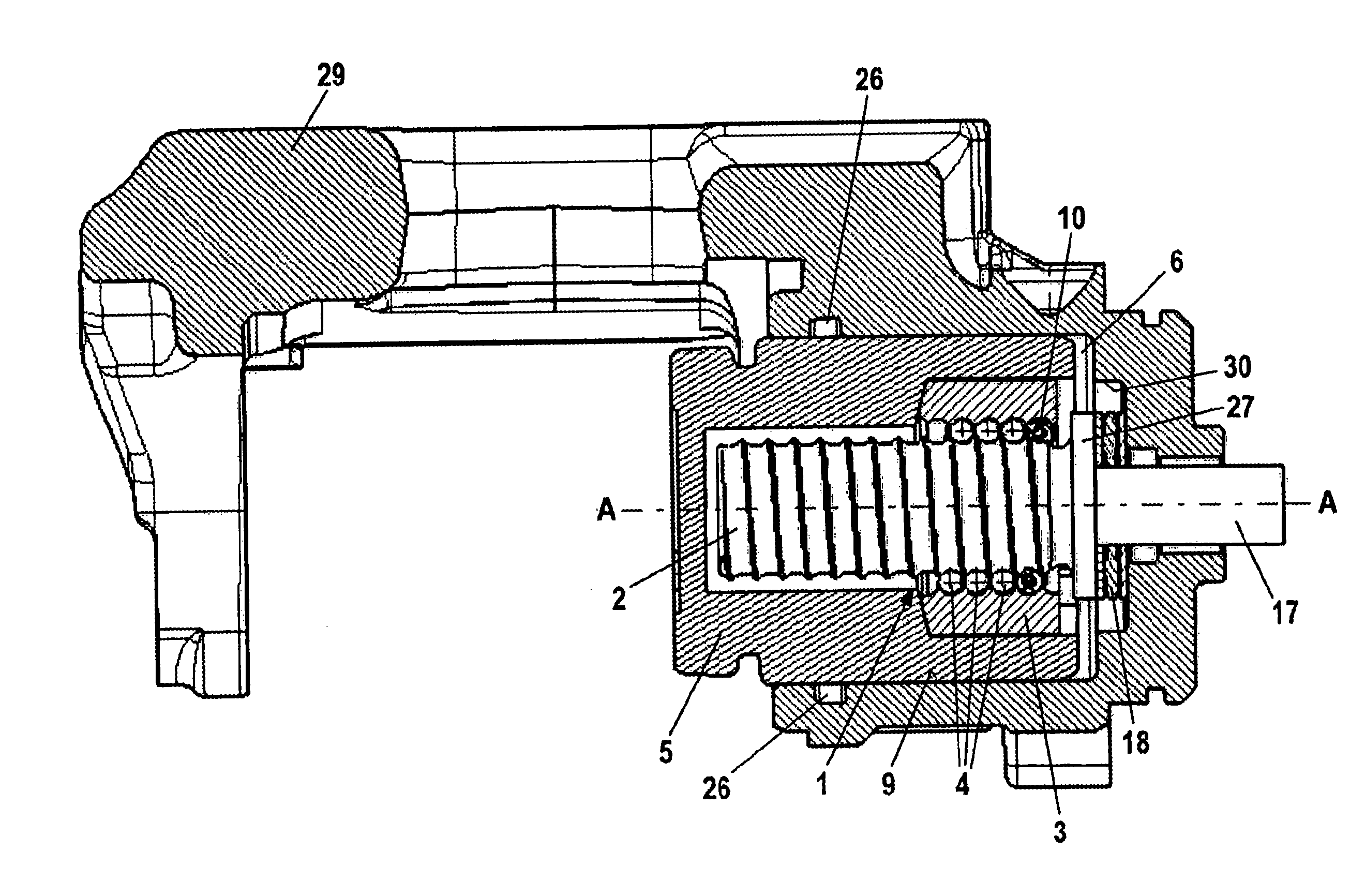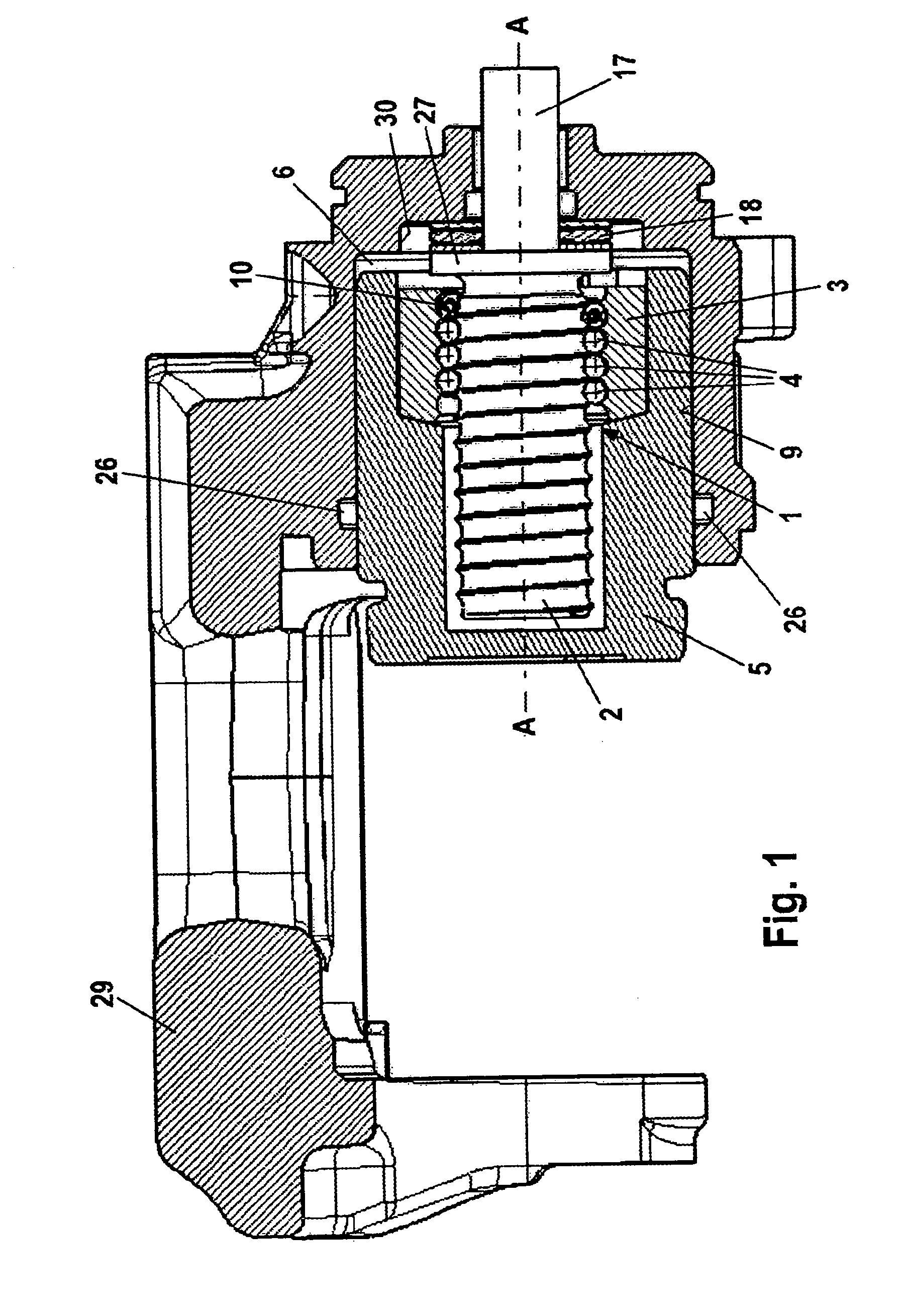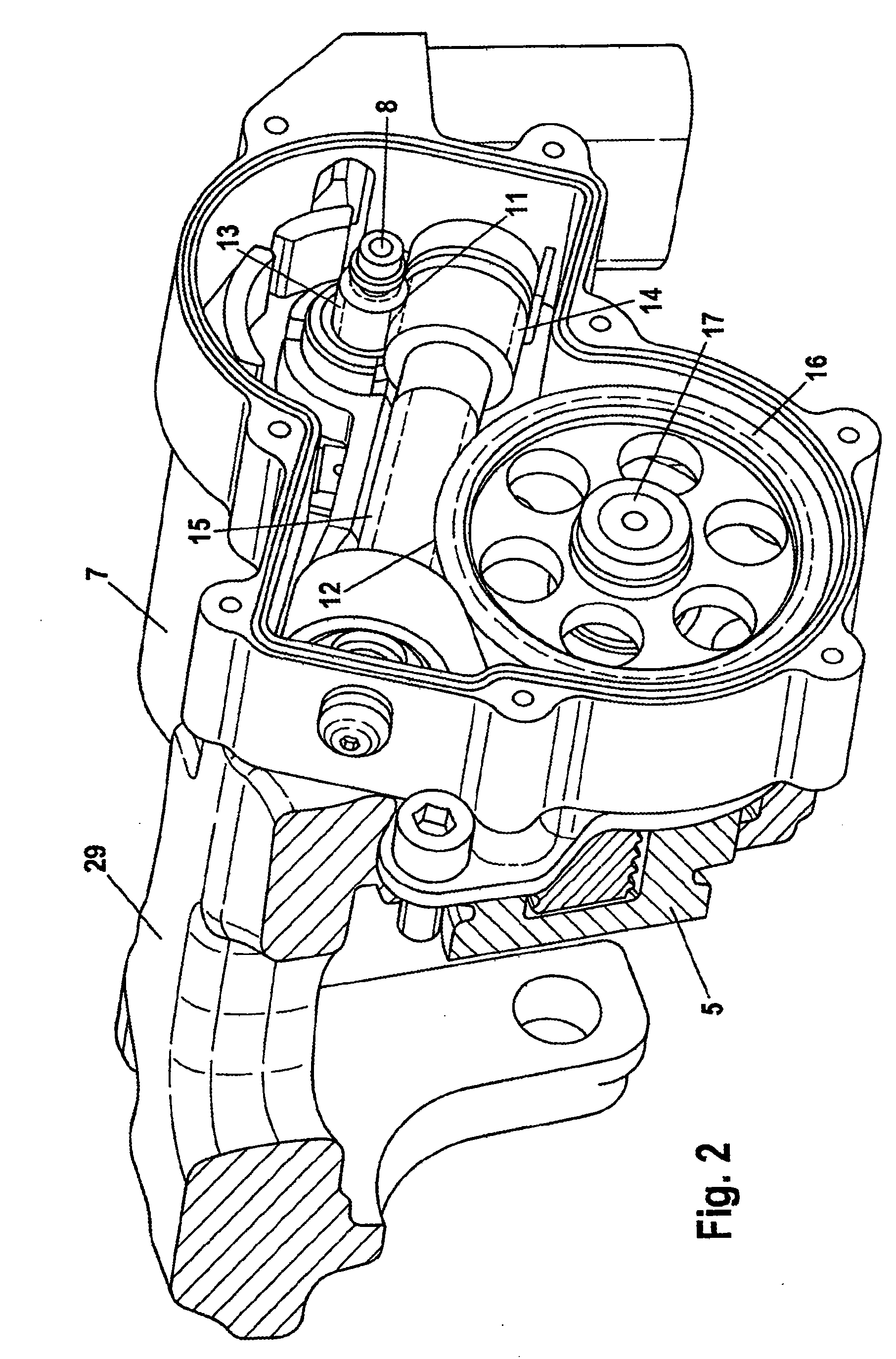Combined Vehicle Brake With Electromechanically Operable Parking Brake and Gear For Converting A Rotary Movement Into A Translational Movement
a technology of electric motor and parking brake, which is applied in the direction of gearing control, mechanical equipment, gearing control, etc., can solve the problems of relatively high manufacturing cost of the ball screw mechanism of the prior art, and achieve the effects of reducing electrical power consumption, high efficiency, and cost-effective manufacturing
- Summary
- Abstract
- Description
- Claims
- Application Information
AI Technical Summary
Benefits of technology
Problems solved by technology
Method used
Image
Examples
first embodiment
[0036]FIG. 3 represents the transmission 1. FIG. 3 shows that the balls 4 are arranged so that they can move to a limited extent between two stops 21, 22 in the thread between the screw spindle 2 and the screw nut 3. A spring element 10, which allows the balls 4 to slide in no-load actuation of the transmission 1 and allows the balls 4 to roll when the transmission 1 is actuated under load, is arranged between the first stop 21 and the balls 4, the spring element 10 acting as buffer and maintaining some rolling travel ahead of the balls. The stops 21, 22 are frictionally coupled to the spindle nut. Alternatively they may be integrally formed with the spindle nut.
second embodiment
[0037]the transmission 1 shown in FIG. 4 has a second spring 20, which is arranged between the second stop 22, not shown here, and the rolling elements 4. This additional second spring 20 serves as buffer when releasing the parking brake. This second spring element 20 comes into play if a high hydraulic brake pressure has been admitted into the operating pressure chamber 6 prior to actuation of the parking brake. In this case the rolling distance of the balls 4 when releasing the parking brake is greater than when actuating the parking brake and the second spring element 20 maintains a rolling travel ahead of the balls 4 as a buffer.
[0038]Both of the embodiments represented in FIGS. 3 and 4 have a screw spindle 2, the lead of which is between 3 mm and 5 mm per revolution. The spindle nut 3 preferably has 2 to 5 thread turns.
[0039]FIGS. 5a to 5d show an exemplary embodiment of the stops 21, 22 in FIGS. 3 and 4. As the two sectional representations in FIGS. 5b and 5d illustrate, the s...
PUM
 Login to View More
Login to View More Abstract
Description
Claims
Application Information
 Login to View More
Login to View More - R&D
- Intellectual Property
- Life Sciences
- Materials
- Tech Scout
- Unparalleled Data Quality
- Higher Quality Content
- 60% Fewer Hallucinations
Browse by: Latest US Patents, China's latest patents, Technical Efficacy Thesaurus, Application Domain, Technology Topic, Popular Technical Reports.
© 2025 PatSnap. All rights reserved.Legal|Privacy policy|Modern Slavery Act Transparency Statement|Sitemap|About US| Contact US: help@patsnap.com



